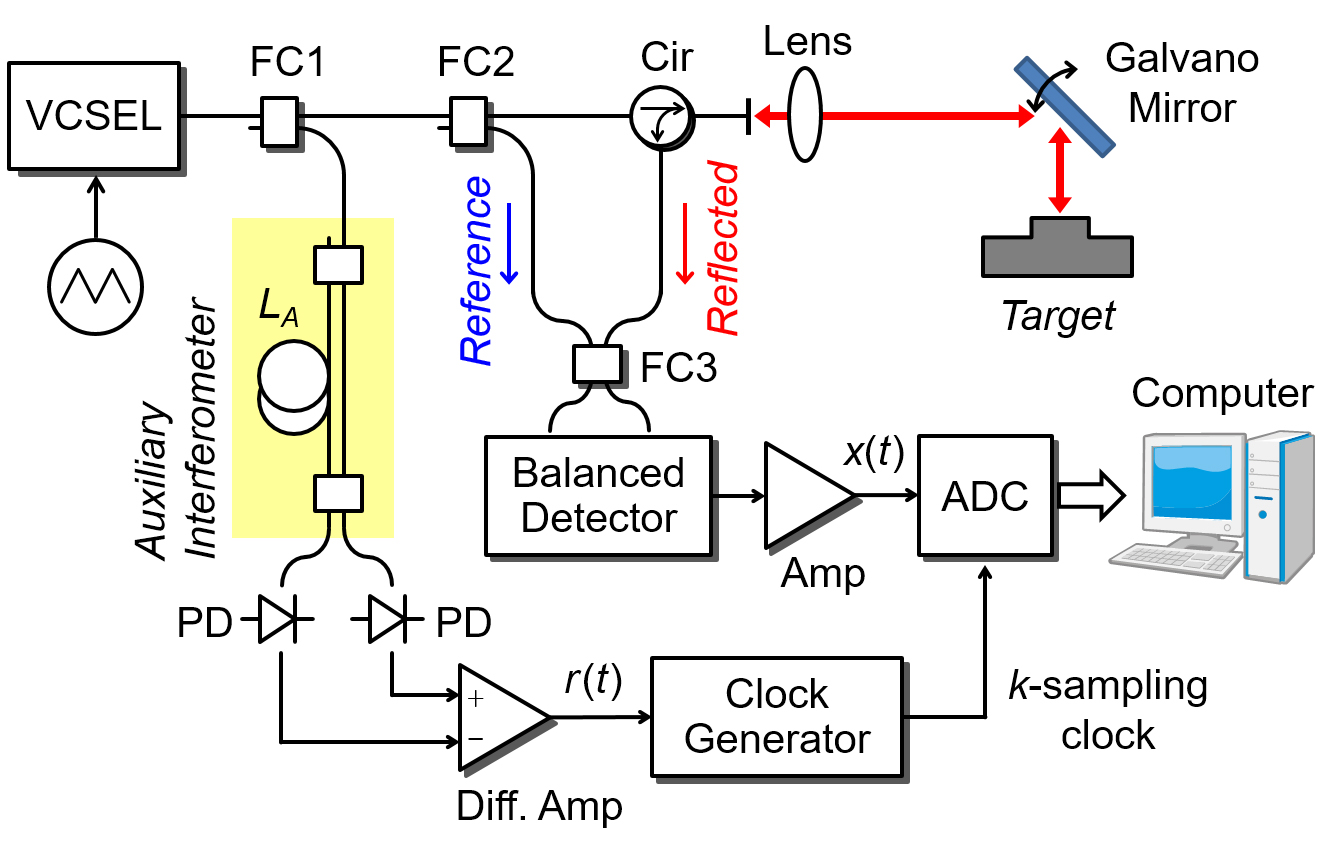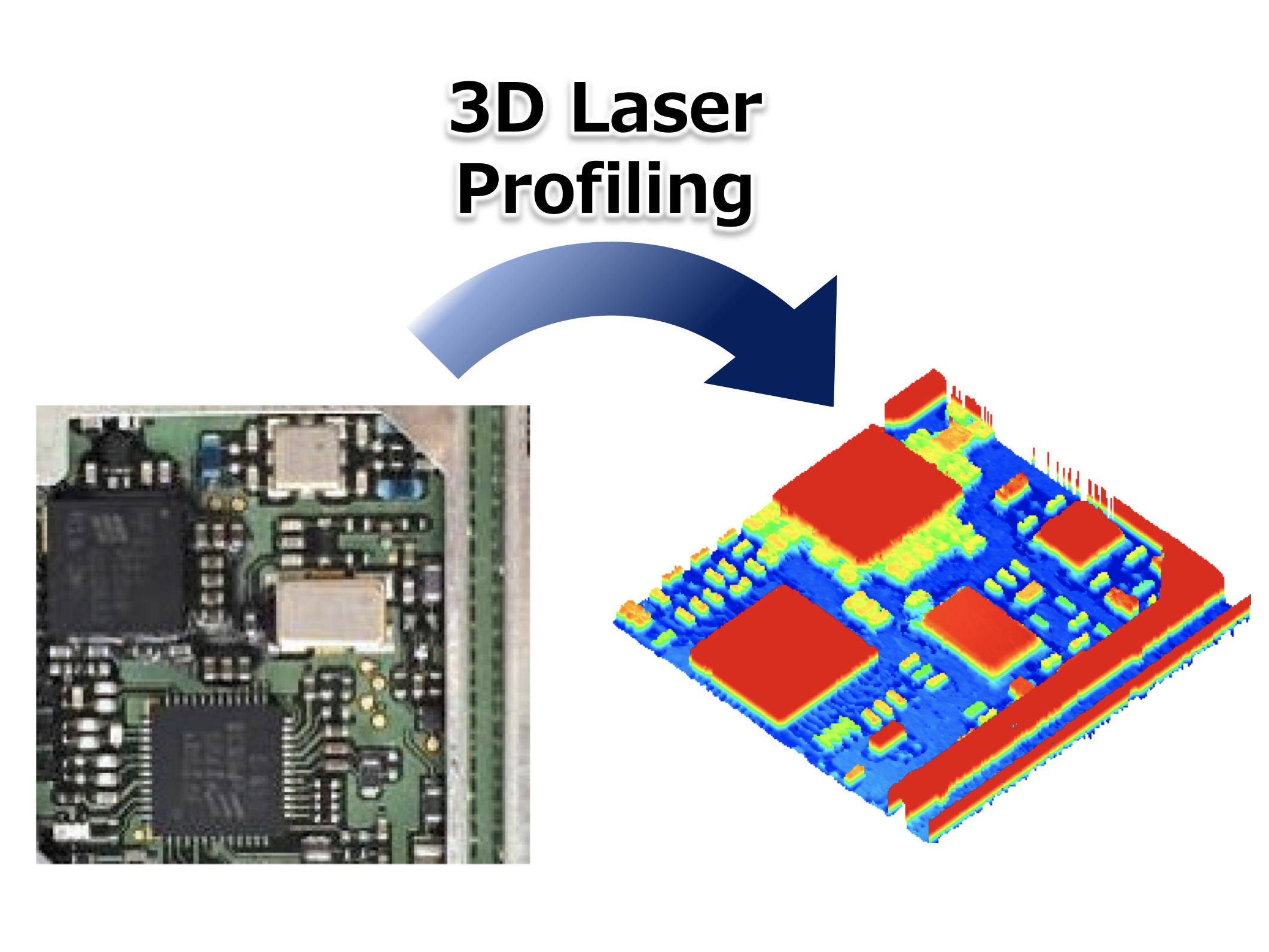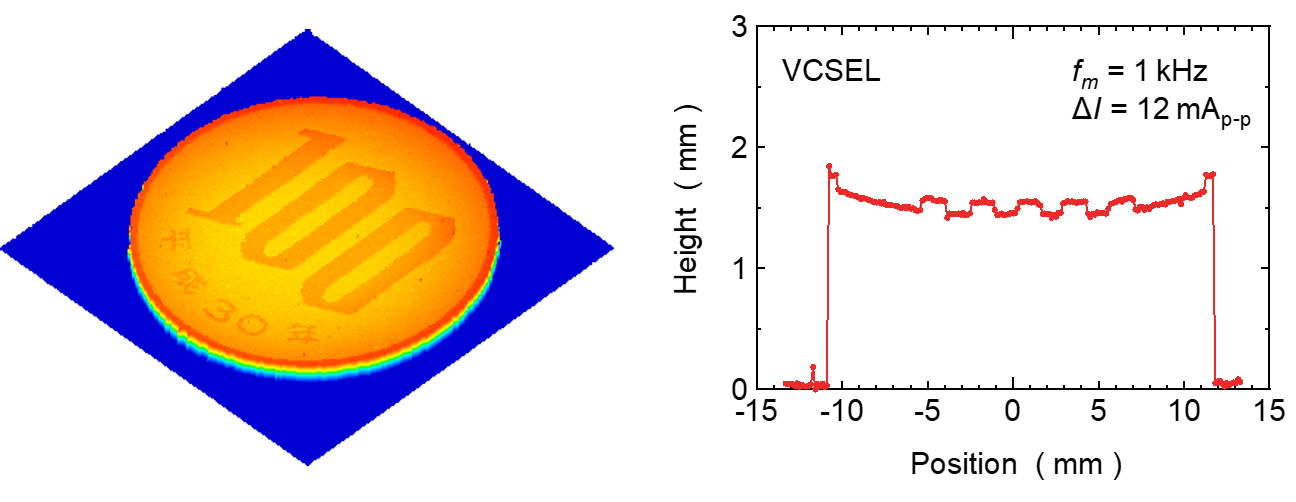Abstract:
A research team at Kanazawa U developed a new laser ranging system for accurate 3D object profiling utilizing FMCW technique. This research may have applications in automated machine vision, industrial quality control, and range finding in autonomous vehicles.
Kanazawa, Japan – A research team at Kanazawa U developed a new laser ranging system for fast and accurate 3D object profiling utilizing frequency-modulated continuous-wave (FMCW) technique. By utilizing interference of light, the system has performance of highly sensitive profiling within a few microns in a few tens of seconds. This research may have applications in automated machine vision, industrial quality control, and range finding in autonomous vehicles.
“Computer vision” is the general term for a wide range of optical systems that allow for the automated detection and monitoring of objects. As production lines in factories increasingly rely on computers for quality control, new devices are needed that can rapidly measure the topography of targets with sub-millimeter resolution. Now, scientists at Kanazawa University have presented a new 3D profiling system that can provide the desired measurements in less than a minute. To achieve this, the research team used a technique called frequency-modulated continuous-wave (FMCW) technique. This method utilized an optical frequency-swept laser as a coherent light source. The reflected laser beam from the surface of the object interferes with the original laser beam on the photodetector.
The underlying principle is that when any two waves with slightly different frequencies interfere with each other, a “beat” is produced with a frequency equal to the difference of those frequencies. In the system, the interference signal has a “beat” because the interfering laser beams have different instantaneous optical frequencies due to the distance to the object. Then the distance to the object can be obtained by frequency analysis of the interference signal. By scanning the laser beam over the object, a complete high-resolution profiling can be realized.
“The technology we used is similar to optical coherence tomography done by ophthalmologists,” says senior author Koichi Iiyama. “However, the current system is much more cost effective, while still allowing for profiling to be measured to less than three microns.”
As a proof of concept, the researchers profiled a 100-yen coin. They reported a four-fold improvement in scan time, down to just 23 seconds, compared with their previous record. “The system we developed is very useful for industrial applications, such as profiling of mechanical workpieces and the inspection electrical circuit boards,” first author Rini Khamimatul Ula says.
Ultimately, a wide array of industries, such as automotive, pharmaceutical, or manufacturing, could see gains in efficiency by implementing machine vision to validate product quality.

Figure 1.
Developed 3D FMCW optical object profiling system.

Figure 2.
Printed circuit board of a mobile phone to be profiled (left figure) and its profiling result (right figure). ICs, small electronic components and narrow wiring around the IC are clearly profiled.

Figure 3.
(Left figure) Profiling results for a 100JPY coin. Incuse of “100” and Japanese traditional era are clearly profiled. (Right figure) Profiled cross section around center of a 100JPY coin. Five steps with 100 μm step height are incuse of “100”.
Article
Three-Dimensional Object Profiling Using Highly Accurate FMCW Optical Ranging System
Journal: Journal of Lightwave Technology
Authors: Rini Khamimatul Ula, Yusuke Noguchi, Koichi Iiyama
Funder
This work was supported by JSPS KAKENHI under Grants JP24560517 and JP17K06457.



 PAGE TOP
PAGE TOP